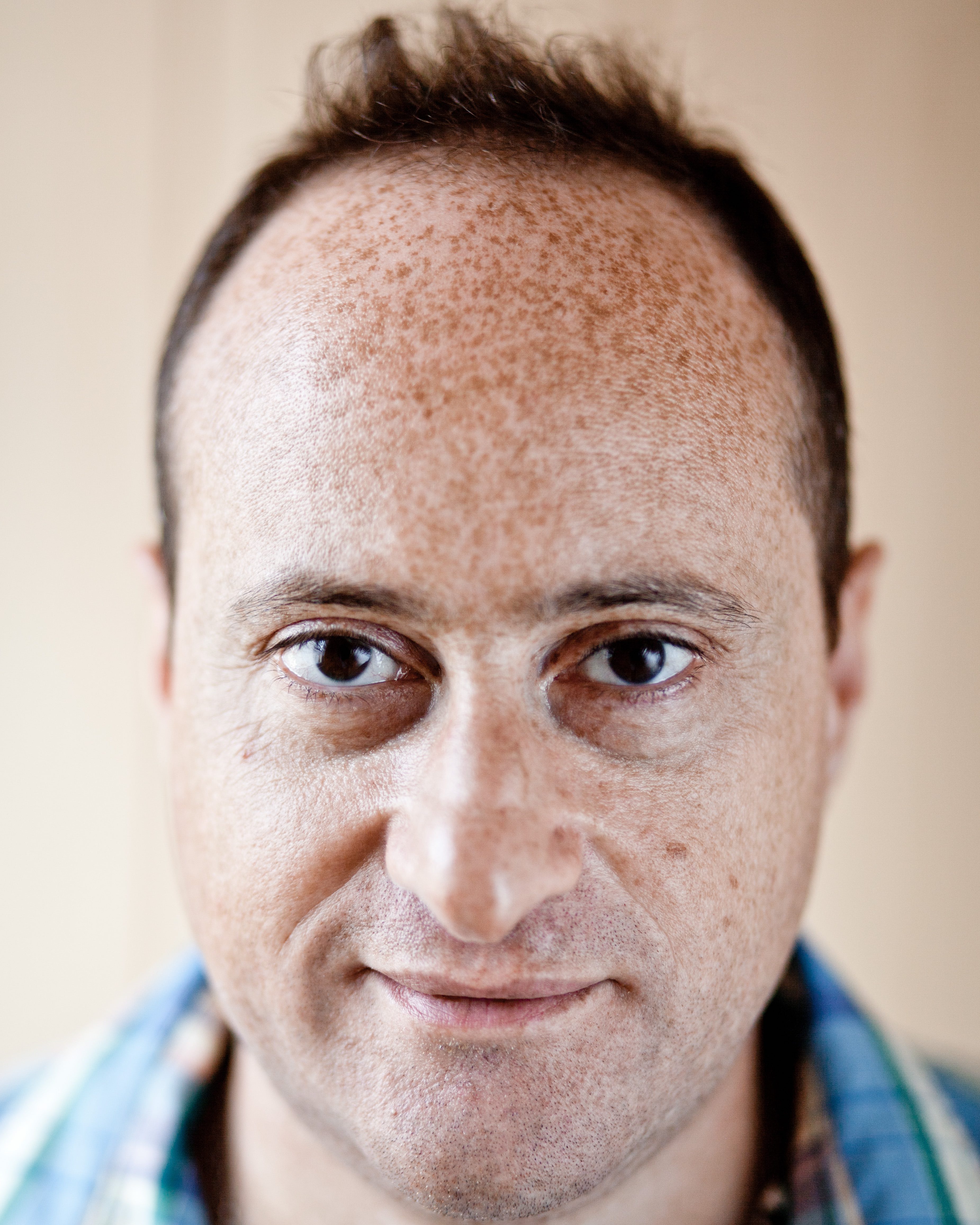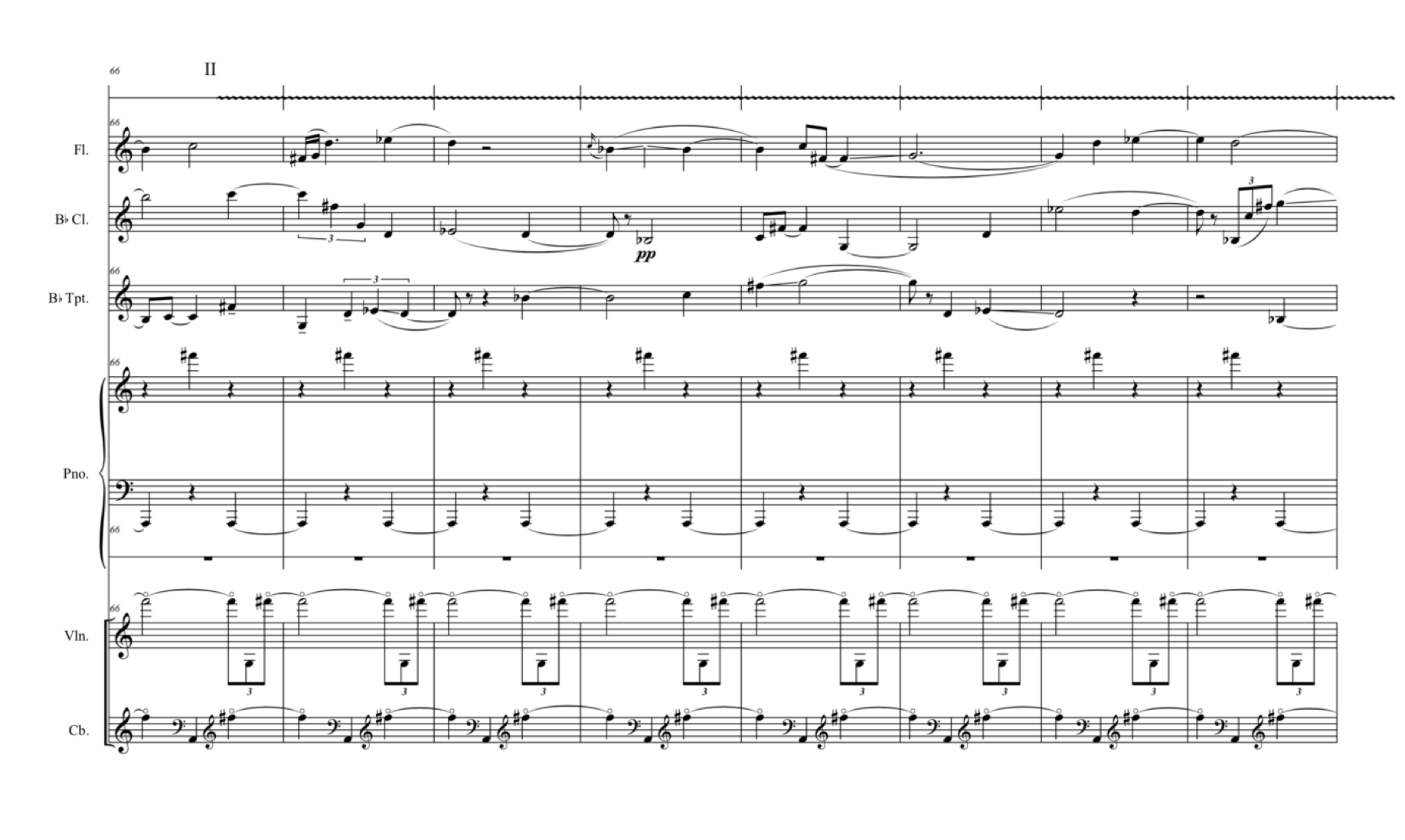
Click here to open post in Norwegian.
As told to Andreas Aase, professor II, NTNU
Introduction
Syrian composer Zaid Jabri spent the first half of his stay as composer-in-residence at NTNU’s Institute of Music in Trondheim, Norway, in the academic year of 2017-18. His illustrious career has seen him moving through the world musically and geographically, from an upbringing in a progressive artist family in Damascus, via substantial training at the Academy of Music in Krakow, Poland (which earned him an M.A. degree in composition, supervised by Zbigniew Bujarski) and a doctorate overseen by Krzysztof Penderecki, onwards to many prestigious commissions, residencies and lecture appointments in Poland, Turkey, Germany, Greece, Ukraine, Canada the United States, and elsewhere[note]http://www.zaidjabri.com/bio[/note].
The following interview-turned-lecture took place immediately preceding his departure for a one-year stay at Columbia University’s newly established Institute for Ideas and Imagination in Paris, where he will be a member of a small group of seven non-American fellows from across several disciplines.[note]http://heymancenter.org/about/columbia-institute-for-ideas-and-imagination-fellowship/[/note] In our conversation, Zaid singled out three aspects from the vast compositional toolbox he has built over the years: Microtones, Heterophony, and an invention of his own from his degree work which he has dubbed Expanded Series. All of these features intertwine with each other in his music and illuminate his bridging of Western and Middle Eastern musical traditions. Through his compositions and through his teaching, Zaid stresses that this bridging is not only very fertile musical ground – it also has historical precedents that in themselves have served to break down barriers of perception over the centuries. Consequently, his methods simultaneously draw from very old traditions and strategies from the 20th and 21st centuries.
Heterophony
The common practice in mosques is for a solo singer (muezzin) to recite the Azaan ( Islamic call to prayer). But in the Umayyad mosque in Damascus, they interchange the musical phrases between the solo singer and a vocal ensemble. The ensemble members include one of seven ornaments in their response phrases, a practice that is obviously impossible to synchronize perfectly. As a result, you will hear the microtonal “clashes” between their voices during the ornaments reverberating in the space of the mosque, which creates a beautiful heterophony. This oscillation between dissonance and consonance makes the music more beautiful to my ears, and I like to use it as an inspiration.[note]https://www.youtube.com/watch?v=eLCy0aUIOAo&frags=pl%2Cwn[/note]
Let me show you an example of how I use this in one of my own compositions called Love and Mercy. It’s based on an Aramaic text by Gregorous Bar Hebraeus[note]https://en.wikipedia.org/wiki/Bar_Hebraeus[/note], and this was my PhD project in Poland along with a thesis. Love and Mercy was performed in 2011 by the radio chorus in Krakow and the Polish National Radio Large Symphony Orchestra.
It’s like writing something with sounds that are not written. Or, it’s almost like cheating (laughs), because I try to compose something that sounds improvised.
In that example, the time distance between the instruments was very narrow. If we make it wider, we will have a result like an echo, but it’s not an echo. Let me play you a segment from the end of the piece. Listen to how the chorus parts start one after the other.
This heterophony is used in my chamber music, and it’s particularly effective if it’s performed in a big concert space where you can hear the sounds coming from different angles and corners of the room.
Here’s another example, from the piece Glyptos 2. Listen to the flute, the clarinet and the trumpet.
Each instrument can add its own ornaments – everything is written- and sometimes the instruments appear very quickly after one another, so you can hear dissonances and consonances between them. And the source for all this is in the ‘imperfection’ you heard in the recording from the mosque.
As an aside, I have also experienced the practice of performing music as very different from recording it. In some instances, I have had my music recorded one instrument at the time, layered in multi-track fashion, with the possibility of altering tunings and other things between the various passages of the given piece. I compare the difference between this and live performance in a big space to the difference between a ready-made microwave meal and an elaborately prepared dinner. Let me illustrate this through a comparison between a live recording of Abdel Baset, my favourite Quran citation singer, and what I perceive to be a lifeless, studio-manipulated recording.
If you noticed his high-pitched passage there, he did it all in one breath – it almost becomes a competition between him and the audience. In the studio, they can cut and paste things like this, like in the following recording. I hear this as cold and without energy.
Microtones
The following is based on a general lecture about microtones I did for students at the Academy of Music in Gdansk. I started with discussing intervals and also how overtones, or natural harmonic series, don’t exactly correspond to what we play on the Equal-tempered piano. We tend to think that all classical music is limited to this modern tuning, but it’s not, for example the natural horn used in classical music. I did a test with my students, based on the fact that, depending on where on the planet you look at it, some people can distinguish tonal variations down to six cents[note]http://hyperphysics.phy-astr.gsu.edu/hbase/Music/cents.html[/note], some from eight cents and above.
In Polish folk music, they don’t use well-tempered tuning – I honestly don’t understand why we think it’s the best!
She’s obviously singing very well, and there is no way you can accuse her of being ‘out of tune’, because she repeats every deviation from well-tempered tuning. You hear it in the instruments, too.
And, from another region, in Western Poland, there is the bagpipe – listen to the high third interval:
We did a project – which took me a while – with my Syrian friend Iyad Haimour who plays the Kanún, a dulcimer-like instrument. I dictated some tunings to him, in a process that could easily have been done on a computer, but that would have ended up sounding a lot more lifeless. I should also mention that I based my research on Al-Farabi’s observations on music[note]https://en.wikipedia.org/wiki/Al-Farabi[/note]. First we have a major scale:
Then we have what I would call a more natural major scale, which to my ears sounds brighter – Baroque musicians in Europe will be familiar with this slightly different temper:
So already we here have two different major scales, which can be very important for composers. Then we have the Jharka scale, which is Persian:
Here’s a kind of minor scale:
And this is intended to be a minor natural tonality. It’s of older origin, and works very well for homophony in chords:
Here’s a Boussalik scale, which is another minor color, with a narrower range than the previous ones:
In Persia, they call the following scale Rast, and it gives us a third type of minor scale to work with. It includes what we call the ‘Neutral Third’. I hear it as full of light:
Mahur is a scale that I think arrived in the Ottoman empire in the 17th century, and it’s a kind of major scale.
Hijaz is a very common scale that is still used a lot. Orientalists like Rimsky-Korsakov used a piano approximation of it:
The Saba scale is difficult to work with – it’s very narrow. Listen to its color:
The Ziga Husam starts with the quarter tone – which will then work as a drone, and hence put the rest of the scale out of Western temper:
Also, I’d like to include a passage from Syrian Christian church music, where a male and a female sing first and the congregation – not a choir – sing in response. It’s called Mass In The First Mode:
And here is a church passage in the Eight Mode:
These examples served as important inspirations for my PhD project.
Now, some Eurocentric people say that microtonalities like these are foreign to them, they feel that it’s foreign and not part of their culture, but I can show you that’s not been the case. For example, the Polish composer Wojciech Bobowski traveled to the Ottoman empire in the 17th century and stayed there, playing an important role in Ottoman music[note]https://en.wikipedia.org/wiki/Wojciech_Bobowski[/note]. Several Polish people went there, converted to Islam and integrated into the culture:
https://www.youtube.com/watch?v=Oghw4GqFTho&frags=pl%2Cwn
Between the two World Wars, there were several composers working with microtonalities. For example, we should mention Alois Hába, the Czech composer who experimented with quarter-tone twin-keyboard pianos that captured the full 24-note microtonal scale (you can see it in a museum in Prague)[note]https://en.wikipedia.org/wiki/Alois_Hába – Works[/note]. This is from his 1929 opera ‘The Mother’:
It wasn’t really possible to ask the musicians to play in quarter-tone intervals back then, so he used to tune the second violins a quarter-tone lower instead.
Here you have his ‘Sonata for Quarter- Tone Piano’. It sounds different on the piano, but this is how he composed his music – to my ears, it sounds wonderfully refreshing:
Of course, there was also Charles Ives, who composed “Three Quarter-tone Pieces” for two pianos that were tuned a quarter-tone apart. This is from the same period:
Perhaps the best one, in my opinion, was Ivan Wyschnegradsky from Russia – he belongs to almost the same period.
Martin Smolka is an interesting contemporary composer who lives in Prague[note]http://www.martinsmolka.com/en/index.html[/note]. This is how he uses microtones – he is very anti-romantic in a radical way, mocking the minor sentimental chords with detuning them with quarter tones, and this song is called ‘Mushrooms and Sky’ is a good example:
Of course, there is the Polish sonorism, which uses quarter-tones by through filling out clusters with them[note]https://en.wikipedia.org/wiki/Sonorism[/note]. For example, Penderecki’s ‘De Natura Sonoris 2’. By the way, notice the texture he acquires by combining the musical saw with the flute.
https://www.youtube.com/watch?v=gD73U4x9Tgw
This practice arose from an idea about breaking away from chords, melodies and other conventions, and thinking instead in different forms, about colors, contrasts, and so on. It’s a thought, and idea, and it probably does not spring from any traditional music practices.
Lutoslawski, unlike Penderecki, created his clusters from small melodies that were woven together with each other, so you could say his dissonances arise from the rhythm – from gestures.
https://www.youtube.com/watch?v=xtexspg9Yyc&frags=pl%2Cwn
In Gérard Grisey’s music, the microtones emerge from the overtones – this is from a piece called ‘Partial’” (the opening sound is from a trombone sound analyzed by software):
Syrian composer Nouri Iskandar used microtonal scales too – listen to this recording from Aleppo in 1998:
[fvplayer src=»https://musikk.hf.ntnu.no/wp-content/uploads/2018/10/Nouri-Iskandar-Cello-concerto-Aleppo-1998.mov» width=»320″ height=»240″]His music is a good example of the fact that modal music is not locked down the way we sometimes think of it: the various intervals can be slightly raised or lowered depending on the context in which they appear. The cellist George Hayrabedyan shows that here.
Now over to my own work and how these influences show up there. Song Without Words 3 is a piece for strings and cello, plus some percussion. I try to create a color of the quartertone rather than using it in a direct way. For example, the glissandi move downwards in micro intervals. This is how the texture sounds – I’m trying to create a sound that doesn’t really exist in a traditional string orchestra. (This is the Syrian National Chamber Orchestra before the war):
That passage also includes aleatoric texture which creates the illusion of the strings improvising.
Sometimes composers are crazy and want to create sounds that don’t really exist. If you’re familiar with the Doppler effect, that’s what I imagine, say, when I work with a good cellist and have him or her play a motif and then repeat it one quartertone lower, then another quartertone lower, and each time we double the rhythmic duration – it’s twice as slow for every repeat. In the notation, I represent quartertone lower passages with a mirrored flat sign above the passage:
“Here’s a different way of using quarter-tones – this is a piece I wrote called Gera and Qasioun, played by my students. We don’t really hear this as quarter-tones, but they exist”:
Expanded series
This is a device I developed to expand on the principle of the drone-anchored Mass sections in one mode at the time that we heard from the Syrian Christian church music. I create variants on small melodies, maintaining the idea of keeping the same center. Here, for example, C is the center, and sets up the following sequence of notes:

Then I do a multiplication of each step, and get this:

To explain from the premise of the twelve-tone scale: The first interval in Fig. 1 is between C and C#, or two semitones. If we double it, we get a leap of four semitones, from C to Eb, which is the first interval in Fig. 2. This doubling then happens to the other intervals (or distances between notes) from Fig. 1, resulting in the series you see in Fig. 2. There is, of course, a limit to how big your multiplications can be – we hear from approximately 15Hz up to 20 000 (at least when we’re children; later that can drop to around 15 000, at least that’s the case with me) and the solution is to return back in counting.
We can also expand the melodic shape’s rhythm – following the same logic, you can double the note values from Fig. 1 and get this:

If you double both the rhythmic value and the intervals, you get this:

And that’s just a basic expansion – imagine how many variations you can create on just a small motif! Because I maintain the direction of the intervals when I expand, the melody keeps its basic shape, it just becomes wider.
Then I apply the same principle to quarter- tones, and a huge library of possibilities opens up. And it all came from the church, from the idea of creating as many variants as possible from the same starting point – in the Syrian secular music that Bar Hebraeus came out of, that means D or E.
And you can apply fractal (or infinite) multiplication to this as well. Star shapes and triangles can form your melodic concept, which connects us to Islamic visual art as well: The infinity aspect of it tries to show that there is nothing like God – you can’t imagine God – so the artwork manifests as a symbol of a conceptual understanding, but not a visual representation. It’s not unlike the butterfly effect: Nature’s own imperfection creates its own beauty and perfection, just like the fluttering of the air between the singers in the Ummayad mosque we discussed earlier.
In Love and Mercy, I chose to have the intervals in the beginning very close to each other because it will start to expand. For example, in this passage the singers start out singing one melodic variant, then another which is wider, then another which is even wider, and so forth.
In this particular example, it’s about twelve notes that constitute the basic melodic shape. When I applied the same principle with quarter-tones, I got material that I used in the second movement of Love and Mercy. Sometimes I used it melodically, sometimes harmonically.
It’s a tool. You write a melody, you create expanded series, and you have a bank that you can use. What you do with it is a different issue. Personally, I go the organic composer’s route as I create my music; there is no strict rule about completing each series or anything like that. The composer should not be put in a cage, it’s a source of inspiration.
Using the same technique, if we divide the 12-tone scale into a 24 quarter-tone scale we get many more variants of the same series:
Here’s another example from the second movement of Love and Mercy where I used the quarter-tone variants harmonically in the first and second violins:
As an aside, it’s worth mentioning The Greek composer and theorist Nikos Skalkottas[note]https://www.britannica.com/biography/Nikos-Skalkottas[/note], who started creating national music inspired by Greek folklore, then went to Vienna and became a dodecaphonist – and when I held a lecture in Athens, the Greek musicologist Aggeliki Kordellou said that if he had lived longer, she thought that he would have created the Expanded Series.
Anyway, I have a huge reservoir of these series, and I think “What kind of color do I want here? Dark?” Or “Here I have a nice series for harmony in the lower frequencies of the orchestra”, “Here I see something which I can put in the piccolo”, and so on. My bank is just my raw material, and it interacts with my instincts and my inner ear. Then I add the decoration, like Bartók pizzicato in the bass, the tremolos, the color, the tempo – it’s all open space! This new technique is what my doctorate from Poland is all about, it has a huge range of possibilities built into it, and it’s still with me.
The Polish composer Grażyna Pstrokońska-Nawratil wrote a review about my Ph.D. where she said that my way of using the Expanded Series harmonically, melodically, with quarter-tones and in heterophony sounds like “simultaneous structures in their own orbits”. The wind instruments can be playing one series in heterophony while the strings are playing a different series as a long chord at the same time, and the brass plays the same series as the strings but as single notes – and each of them has its own world. This creates a multi-layered texture, or the “orbits” mentioned above. For example: the female voices do long notes and glissandos, male voices do short notes (“HU-Bo”, which means “Love” in Arameic), with the bassoons. The second brass does long chords, and the first and second violins do tremolo.














